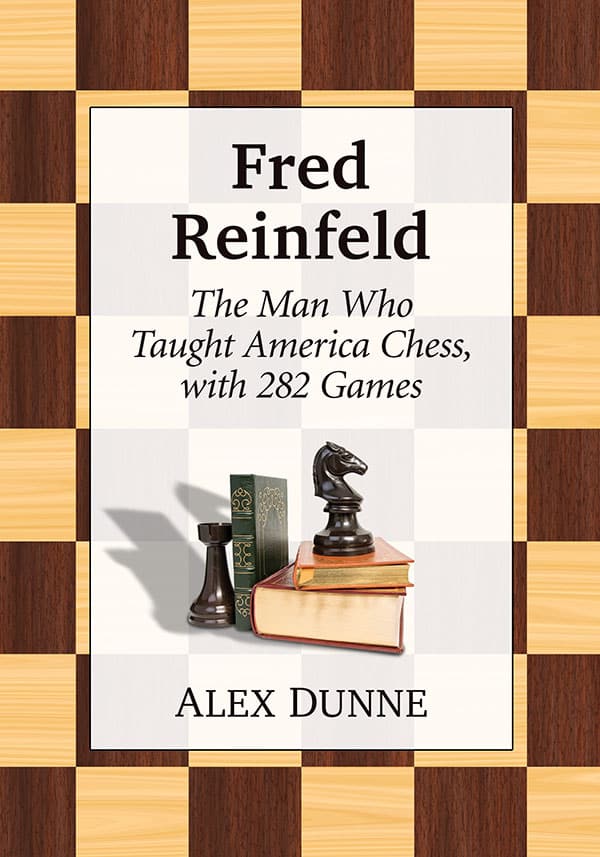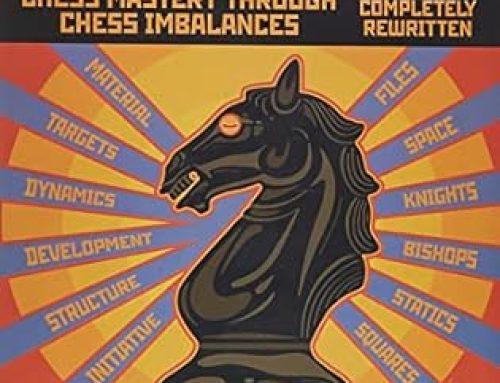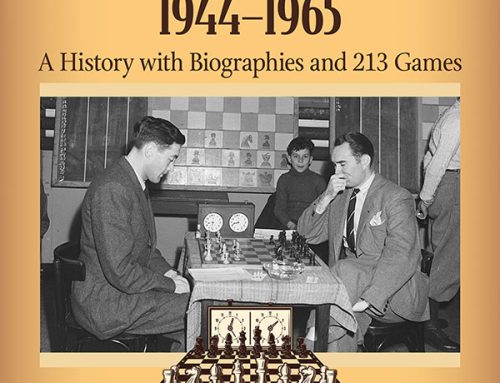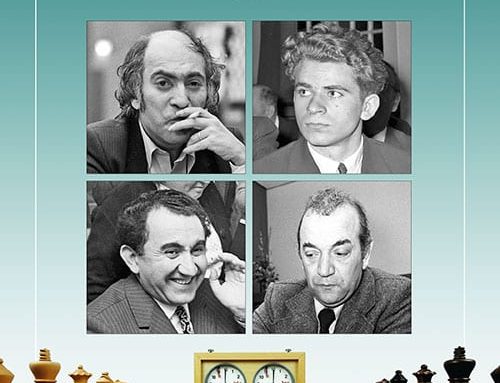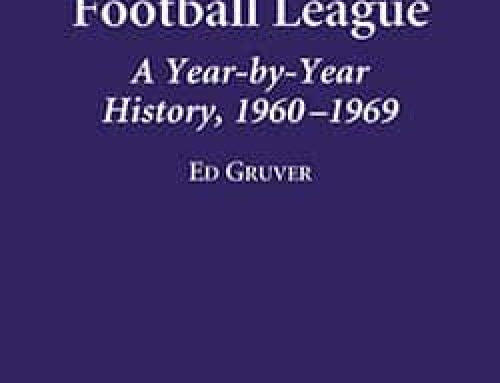Fred Reinfeld: The Man Who Taught America Chess with 282 Games by Alex Dunne, who is the
correspondence chess director for U S Chess. Dunne’s lightly researched book attempts to make two
main arguments. The first is that Reinfeld was an incredibly prolific author and the second is that he was
much stronger than given credit for – a top American player, just below Reuben Fine and Samuel
Reshevsky.
Dunne’s attempt to prove his first point is certainly successful. Simply providing the
bibliography of Reinfeld’s work is seven double-column pages long (five for chess books and two for
non-chess books). Especially in the last few chapters, Dunne also cites these references and provides a
brief overview of the book. Sometimes he includes a bit from a contemporary review. Dunne also cites
many of the articles that Reinfeld wrote, especially those appearing in Chess Review. Dunne uses many
block quotes and oddly more frequently selects text from the articles than from the books that Reinfeld
is better known for writing.
Dunne is unable to demonstrate that Reinfeld was one of the top three or even five strongest in
US chess. As Dunne notes (p. 122), this raking was determined by Reinfeld and two others using a
system that was like the one used by the U. S. Lawn Tennis Association. Granted, the context of
Reinfeld’s games occurred during the Great Depression and the Second World War (1929 – 1945), when
there was not an official or even unofficial rating system in place. However, if the included score tables,
a wonderful addition that is too often ignored, are carefully examined it does not support ranking
Reinfeld within the top three to 5 players.
Reinfeld won a few Marshall Club Championships, but at the time these tournaments were
organized so each player had several days to prepare for the next opponent. While these were strong
events, only about half the top players in the city participated because the other half were playing at the
rival Manhattan Club Championship. He also did well in a few regional invitationals, such as the Ventor
City events and the New York State Championship; but when the nation’s top players participated, he
did not do as well. He played in two U.S. Championships and the event to determine the 1933 Olympiad
team, but he didn’t finish in the top half of any of these competitions.
The book is informative but does not provide much historical or local context surrounding
Reinfeld’s life, or about many of the strong players he encountered along the way. There are some
errors in the provided information, such as that the Manhattan Chess Club was the oldest club in the
country (p. 6), but the Mechanics Institute Chess Club in San Francisco was founded before the Civil War. Such minor errors do not substantively take away any understanding of Reinfeld strength as a player or writer, and Dunne’s tight focus on Reinfeld’s writings, explain why there is not much more material about the enthralling New York chess scene Reinfeld experienced during the first half of the twentieth century.
The book lacks many of the appendices that are typically expected for this type of publication.
Most notably is the lack of a full bibliography. Notes are often part of the text or included in
parenthetical expressions. Most of Dunne’s citations come from the books that Reinfeld edited / wrote,
or from reviews of these books, so perhaps it’s understandable if a full bibliography was viewed as not
providing additional value.
In conclusion, the book provides a nice introduction to Reinfeld and certainly demonstrates that
he was an extremely prolific author. It also supports that Reinfeld was a strong player, though not necessarily that “he ranked just below Reuben Fine and Samuel Reshevsky.” (Back cover) Still, even if Dunne does not prove this point, he does include many interesting games and provides a good
introduction to the life of Reinfeld, and so his book is recommended.
This book can be purchased on line at www.mcfarlandbooks.com or by calling 800 – 253 – 2187.

